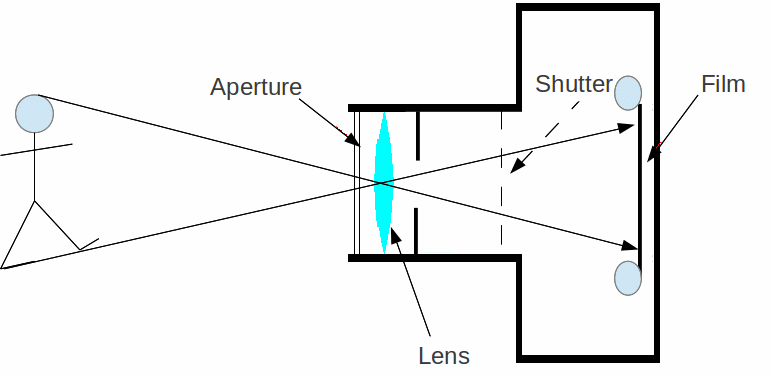A camera consists of a closed box with a movable converging lens at one end and a roll of film at the other. The film is ready to be exposed as soon as a button is pressed to open the shutter and let light enter. The film is coated with light sensitive chemicals, which are changed in colour as soon as light shines on them. A 'fast' film is more sensitive to light than 'slow' film. Fast film is used in dim conditions or when a fast moving object needs to be captured.

The image formed in the film is inverted and smaller than the object.
The image is focussed by moving the lens backwards and forwards. If the object moves nearer the lens, the image further away. To keep the image focussed the lens must be moved away from the lens.
The amount of light entering the camera and exposing the film can be controlled by
-
The length of time the shutter is open. Fast moving objects will produce a blurred image if the shutter is open too long.
-
Varying the size of the hole in the diaphragm just behind the lens. On a dim day a larger aperture is needed to allow enough light to enter to expose the film. The contol which varies the size of the hole is marked in f – numbers. A value of f/11 means that the diameter of the hole is 1/11th of the focal length.
The size of the hole in the diaphragm also controls the depth of focus. A large depth of focus means that near and far objects will be in focus at the same time. This sharpness is obtained by having a small hole in the diaphragm.
